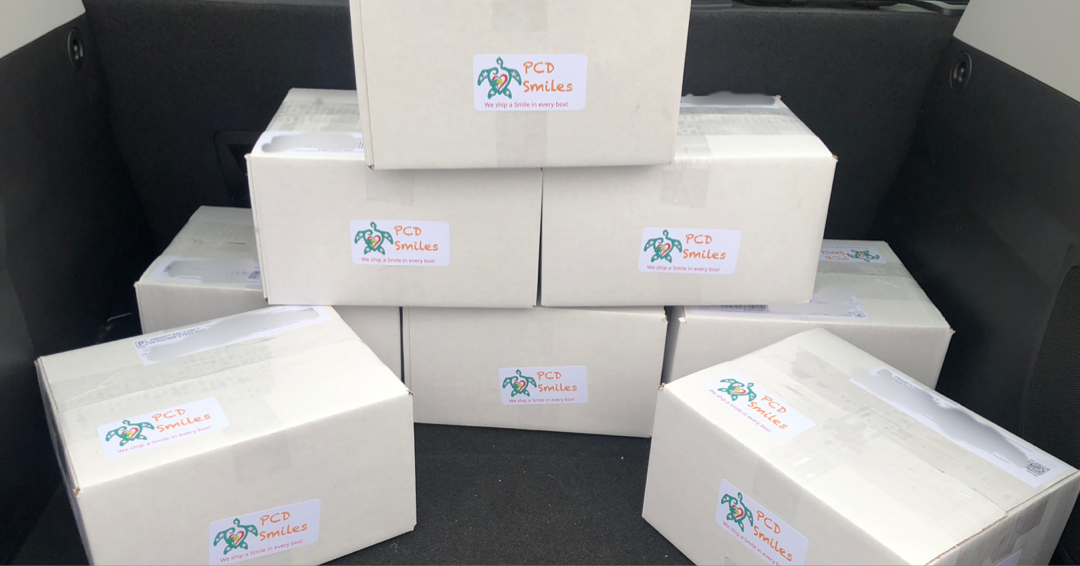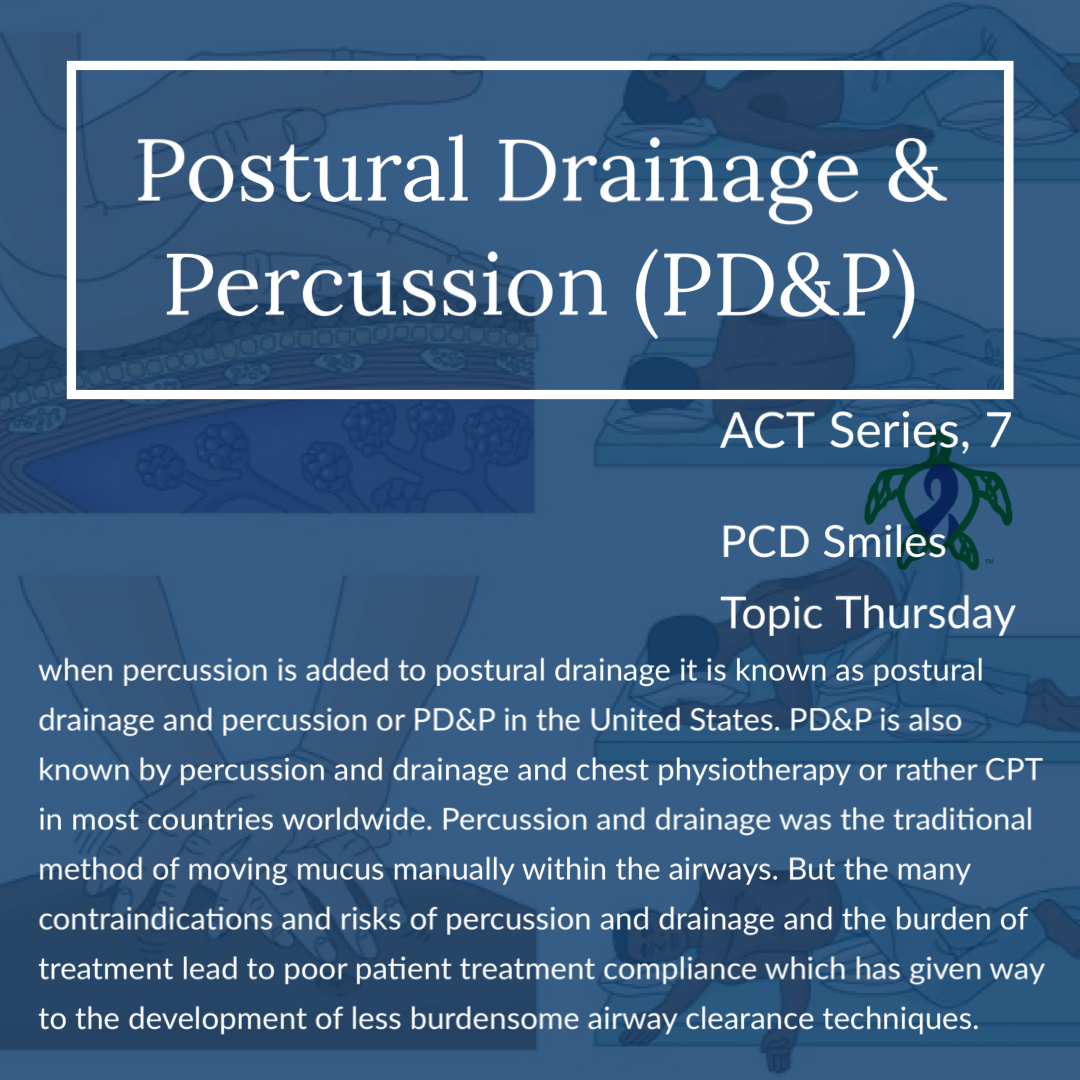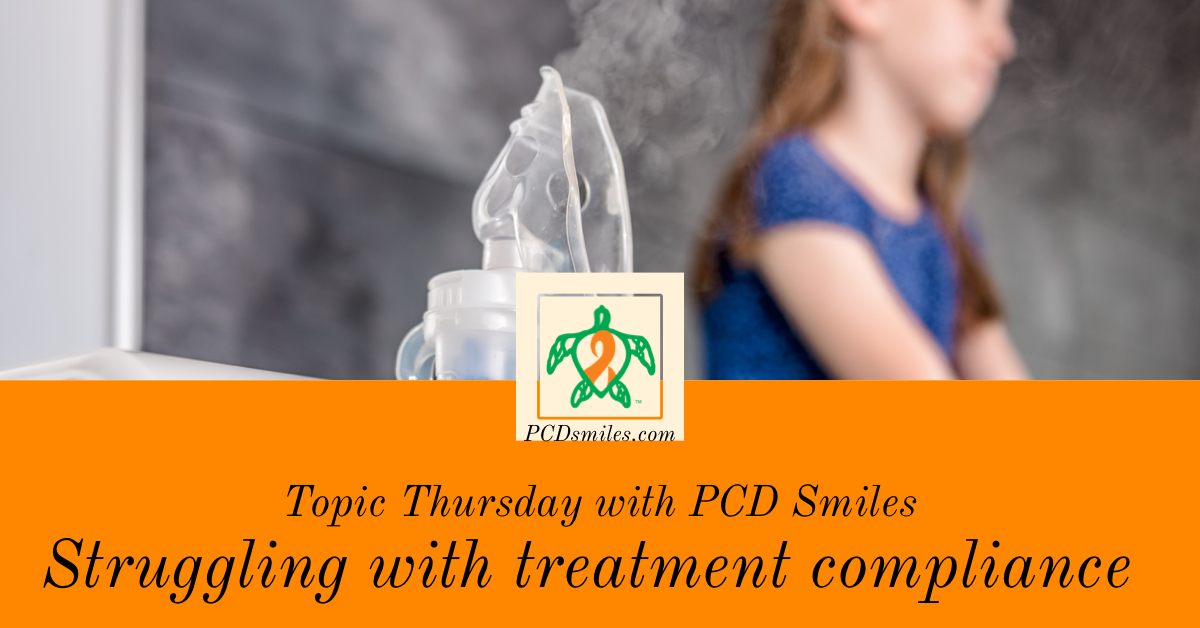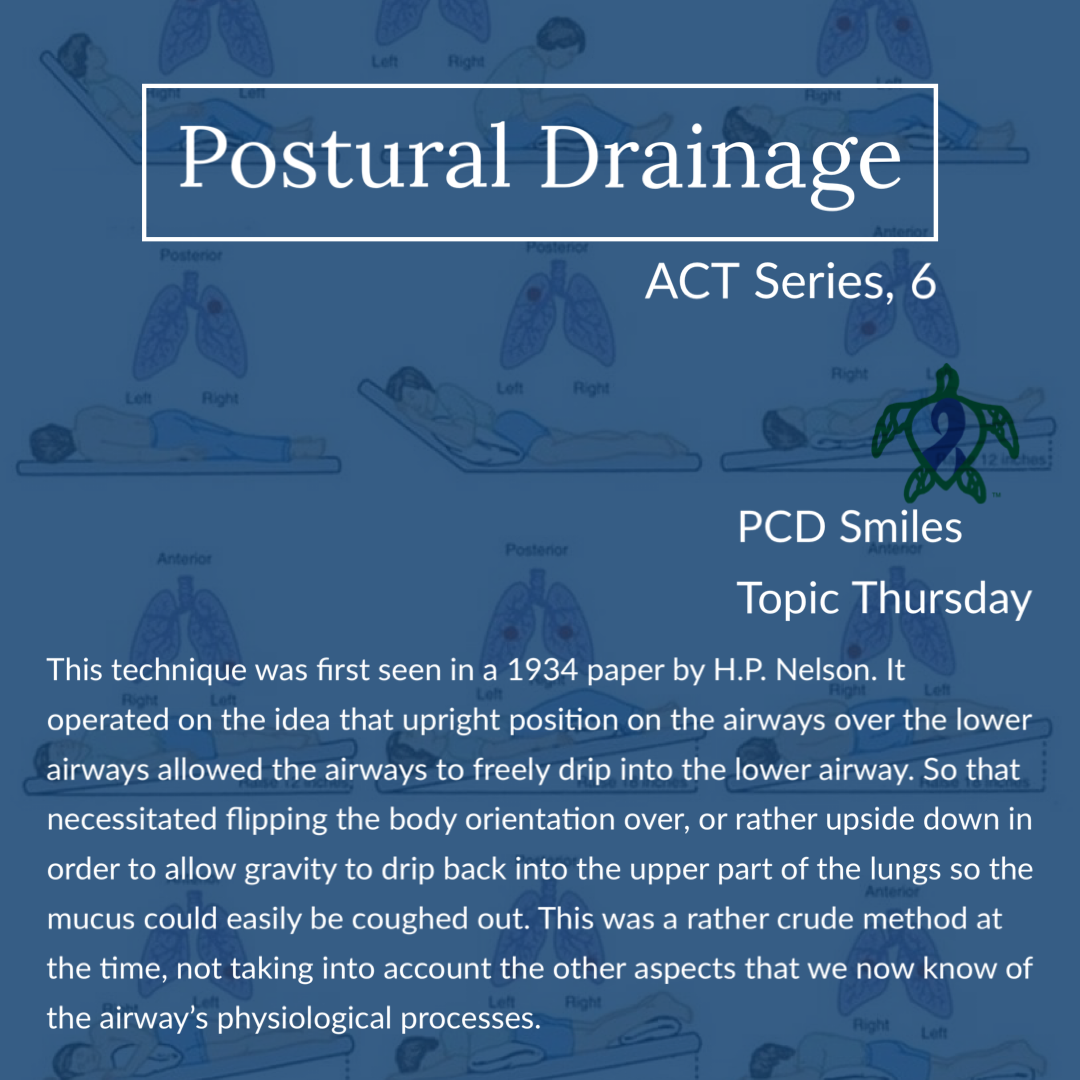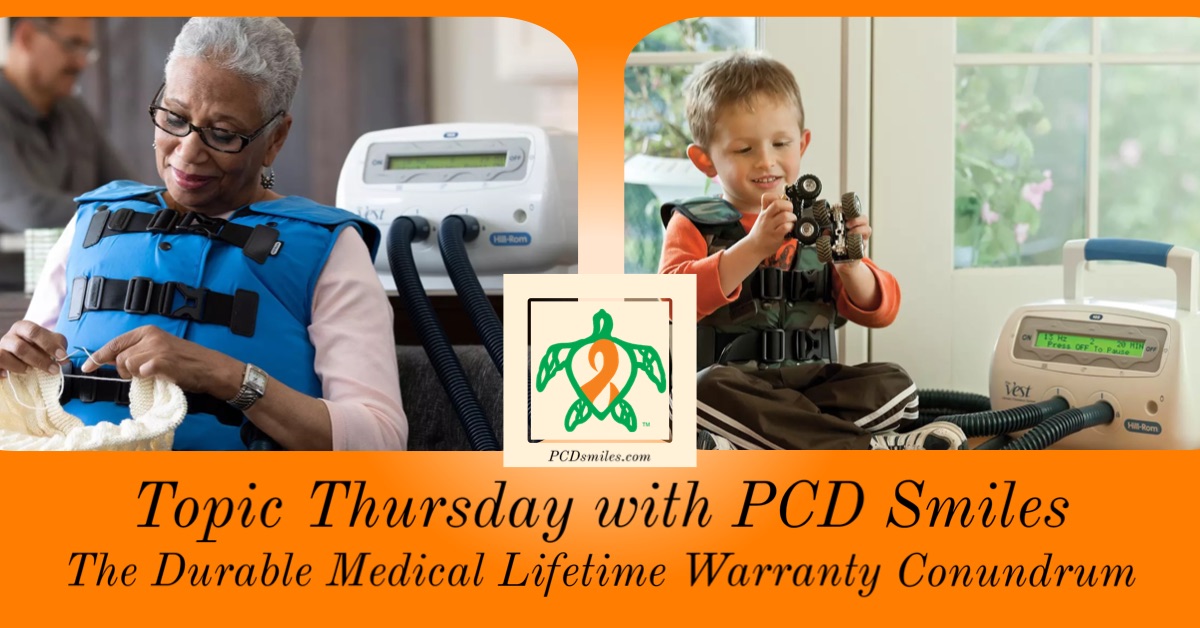As we continue our deep dive into airway clearance when percussion is added to postural drainage it is known as postural drainage and percussion or PD&P in the United States. PD&P is also known by percussion and drainage and chest physiotherapy or rather CPT in most countries worldwide. Percussion and drainage was the traditional method of moving mucus manually within the airways. But the many contraindications and risks of percussion and drainage and the burden of treatment lead to poor patient treatment compliance which has given way to the development of less burdensome airway clearance techniques. There is research that supports the use of percussion and drainage in patients with cystic fibrosis (CF), and those parents with similar mucus viscosity seen in CF, who can tolerate it. Proper percussion and drainage is caregiver dependent, meaning the patient can not effectively perform this airway clearance technique by themselves; they must have a caregiver’s help.
Percussion and drainage operates under the same concepts of postural drainage (PD). In PD the patient is put in various positions to aid in gravity assisted drainage of airway mucus toward the bronchial tree. However as discussed in ACT Series, 6; postural drainage operated under the notion that gravity helps move the mucus along the airways. Recent understandings of the physiological processes of the lungs shows it is ventilation and not gravity that plays a bigger part in moving mucus along the airways. When percussion is added to PD it is thought that applying pressure to the chest wall changes the intrapleural pressures by the vibrations of the lung tissue, which then aids in shaking lose the mucus from the airway walls. The vibrations are done in the rhythmic motions of both hands of the caregiver by clapping onto the chest wall of the patient. Care should be taken to make sure that the clapping is done over the chest wall and not the spine and or sternum. To be effective the vibrations must be rhythmic and constant to shake lose and move the mucus towards the bronchial tree where it can be coughed out. During the rhythmic vibrations (clapping) of each position the patient should be instructed to breathe in slow deep breaths, while stifling any notion to cough. This stifling allows the mucus to build and collect as the mucus moves along the airways towards the bronchial tree by allowing air to get behind the mucus as it moves through the airways. The clapping should be done for a total of three to five minutes for each position of postural drainage followed by shaking or as described by some respiratory therapist as vibration. During the vibration phase of the chest percussion the patient should take a deep breath and then a long slow exhale while the caregiver preforming the percussion shakes their hands while applying pressure in a shaking motion towards the patient’s center mass, towards the patient’s bronchial tree, for the entire breath of the patient’s exhale. This phase should last three breaths and then be followed by three coughs. The patient is then transitioned to the next position of postural drainage. The postural drainage positions are sequenced in such a way that the mucus is collected along the airways as it moves towards the patient’s bronchial tree through the entire percussion and drainage session. Yes, the sequencing of the postural drainage positions, the rhythmic nature of the vibrations during clapping, and the ventilation and shaking sequencing during exhale do actually matter for postural drainage and percussion to be effective. This is what makes treatment compliance difficult for patients and caregivers alike when using this method of airway clearance, especially in patients with thicker and stickier mucus like found in primary ciliary dyskinesia (PCD).
The importance of how percussion and drainage is done to be effective highlights the need for specialized training by licensed respiratory therapists, who are specifically trained in the proper technique and safety protocols and procedures for percussion and drainage. One should not be taking lessons online for percussion and drainage, but instead ask their clinic for a referral for training in percussion and drainage by their PCD clinic’s respiratory therapist or their clinic’s contracted respiratory therapy provider. Studies of early airway clearance techniques (ACTs) has yielded some startling findings and insights into appropriate ACTs for patients. One such study on postural drainage and percussion showed the occurrence of cardiac arrhythmias in thirty six percent of the study participants during postural drainage and percussion with no ischemic changes. Percussion and drainage is contraindicated in patients with recent neurosurgical procedures, chest wall injuries, recent cardio-thoracic surgical procedures, those undergoing anticoagulant therapy, clotting conditions, liver disease, low BMI, recent surgical procedures, those with burns, emphysema, bronchspasms, rib structural defects and deformities, hemoptysis, atelectasis or other lung collapse, and or all other contraindications listed for postural drainage also apply to percussion and drainage. Including as discussed in ACT Series, 6; there are also several studies pointing to increased bronchiectasis progression or rather faster progression of a patient’s bronchiectasis due to percussion and drainage, this is the subject of controversy among various professional practitioners, mainly physical therapist who try to offer percussion and drainage to their clients. However most mucociliary clearance medical professionals advise against percussion and drainage especially in an inclined position (head lower than the heart position), especially to their patients with forceful coughing like seen in primary ciliary dyskinesia (PCD) and CF. The American Association of Respiratory Care around about 2018 actually retired it’s Clinical Practice Guidelines on postural drainage for many of these stated reasons.
It was once thought in primary ciliary dyskinesia that coughing, breathing, and manual techniques like postural drainage and percussion were enough to compensate for the lack of mucociliary clearance seen in PCD. Recent research has now shown not only is this not the case, but that there is a sensory component to motile cilia. When motile cilia are under stress they signal the CFTR channel to do its job and send more hydration to the mucus to thin the mucus in the airways. With defective motile cilia in PCD the CFTR never gets the signal, because the cilia are broken at the cellular level, which is thought why mucus viscosity seen in PCD is similar to that of the mucus viscosity seen in cystic fibrosis (CF). This could highlight why more aggressive airway clearance techniques are needed in PCD, especially as the destruction caused by PCD progresses. With some people with PCD needing aggressive ACTs in infancy. In any case as research in PCD advances so will our understanding of cilia and it’s roles in clearing the airway. Learning the ins and outs of airway clearance techniques will remain an essential part of doing life with primary ciliary dyskinesia. We hope that you join us next week for part eight of our series on airway clearance techniques.
Be sure to join us next week for another Topic Thursday.
Join our Facebook group Turtle Talk Café today, click here.
We have several ways that you can donate to PCD Smiles;
- Visit Smile E. Turtle's Amazon Wishlist
- For more information on how you can donate, please visit our "Donation" page to check out our "Do & Don't policies.
- Or sponsor a PCD Smiles cheer package today!
- To shop for your “Official” turtle care ribbon gear today, visit PCD Style or Smile E. Cove
Thank you for your consideration!
***Please speak to your respiratory therapist or your PCD medical team before commencing any new treatment. DO NOT start using a device, or technique, on this website if you have not discussed this with your PCD team first.***

